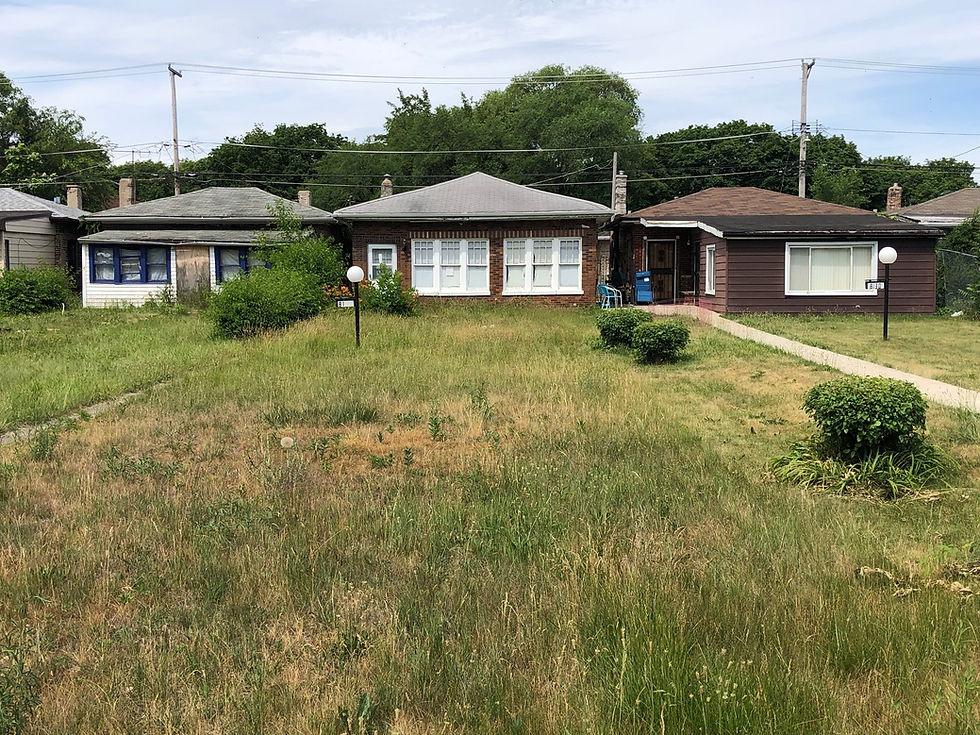Women Build, Too
- Carla Bruni, Preservation & Resiliency Specialist

- Mar 18, 2020
- 4 min read
Updated: Oct 12, 2022
This Women’s History Month, we honor a woman who, in a male dominated industry, built her empire developing swaths of bungalows in Chicago. You can find an abridged version of this blog, and learn about other women who made history, on the National Trust of Historic Preservation’s website.

Meet the remarkable Mary E. Willis. Born Mary Post in Wisconsin in 1862, she married an Irishman named Phillip C. Willis in 1888, and had one child, a daughter named Frances. Phillip was an entrepreneur who, at the turn of the last century, was a traveling salesman, and at some point before 1910 started his own pest management business.
According to the U.S. Census, in 1910, Mary E. Willis had “no occupation,” and was renting an apartment with her husband, daughter, and six “lodgers” in a multi-unit building on the north side of Chicago. Phillip died a somewhat untimely death this same year at age 50—though not very untimely, as the life expectancy in 1910 was only 52-years-old—and he was moved out of state and buried in his beloved wife’s home state of Wisconsin. It was shortly after this that Mary also realized her penchant for self-employment, though thankfully in a different industry.
While we cannot know how Mary handled her transition to widowhood emotionally, she certainly managed to thrive financially after 1910. By 1920, she was living in her own home and is listed as a real estate agent in the U.S. Census. The reality is that she had actually developed dozens of properties at this point, mostly Chicago bungalows, beginning in 1913. In 1915 alone, she built a staggering 20 properties. In 1919, she built 30 more homes. She finally hangs up her hammer in 1921.

Like many developers in the 1910s and 20s, Mary would buy up a row of lots along a street and develop them simultaneously for efficiency. Building was booming at this time in Chicago. The number of dwelling units in Chicago rose from 346,755 in 1900 to 623,912 in 1920 to 843,578 in 1930. Architects like Earnest Braucher, one of the most prolific Chicago bungalow architects in Chicago, were exploding their businesses working for developers like Mary. While Mary used several architects, the well-seasoned Braucher seems to have been her favorite. It was typical for architects to work with only a handful of preferred contractors, and for his work with Mary, he pulled in masons John Baldaszte and Fred Simonson, and carpenters E. Erickson and Algot Berg. Rumor has it that during these boom times, the plasterers would finish one house, rest a plank between the window sills of neighboring houses, and just walk their plaster buckets and tools down the line of new construction, knocking out house after house, their feet never touching the sidewalks. There may be some creative license in that story, but craftsmanship is an artform, after all.
All in all, at least what was so far able to be uncovered by digging through the annals of the Daily Tribune, Chicago’s “ancient” building permits, American Contractor, and the Economist, Mary Willis built more than 60 homes and buildings. The majority of them were in Portage Park, on the 4600 and 4700 blocks of N. Laramie; the 4600 block of N. LeClaire, the 5000 and 5100 block of W. Wilson Avenue; the 5000 and 5100 blocks of W. Windsor Avenue; and the 4600 block of N. Lawler Avenue.

In 1910, when Mary’s husband died, the primary categories of women’s work in the United States were “agriculture, forestry and fishing” and “manufacturing” (both around 23%) and “domestic and personal service” (around 31%). About 8 million women were part of the workforce in 1910, though our overall population at the time was over 92 million. By 1920, clerical work was also a major category for women at almost 17%. Needless to say, Mary’s work as a developer, making her own small fiefdoms along city blocks and supporting both herself and her daughter with what must have been a relatively substantial sum, was not exactly typical. Arguably, even today women are not always known to have an easy time working with many (overwhelmingly male) contractors, and developers also remain overwhelmingly male.
Mary’s daughter, Frances, seems to take after her mother in some regards. In 1917, Frances Willis marries Francis Friss (we know!), though we also see that Francis registers for the draft. It is unclear what happened to the great Frances/Francis love story—another too-young widow due to the war, or possibly just irreconcilable differences—but Frances eventually remarries a young lawyer named Elmer Tone. Along the way, Frances also sells a few properties of her own, though she is never listed in the census as being in real estate.
Alas, according to the 1930 census, Mary is retired and living with Frances and Elmer Tone. The picture above is presumably from that time. She dies at the age of 75 in 1938, and is buried not with her husband in her own home state of Wisconsin, but in adjacent suburb of Chicago, where she built her empire.









Comments